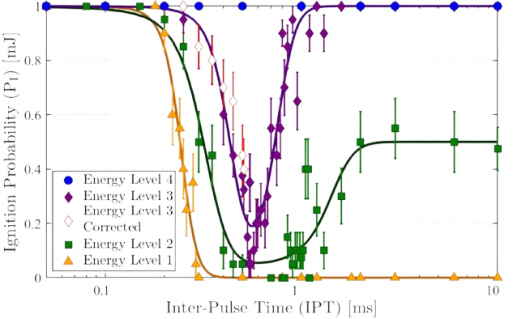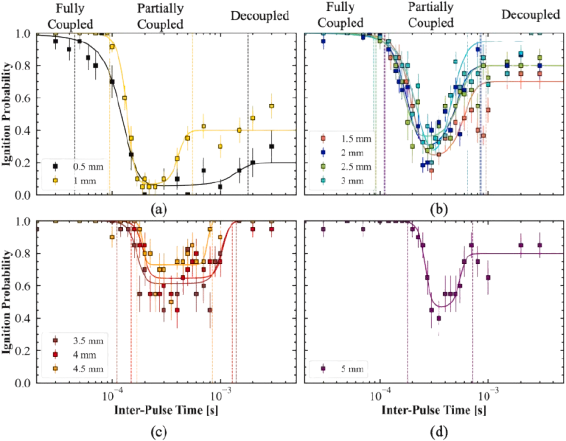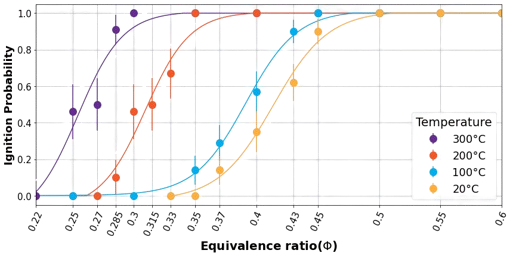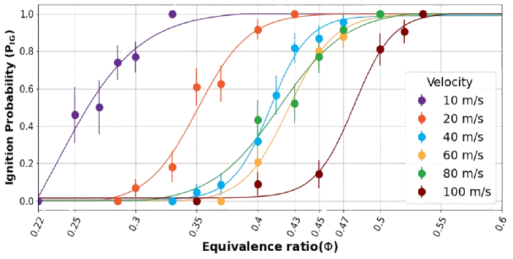Recent research by our group at the Technion – Israel Institute of Technology explores the impact of energy distribution, inter-electrode gap distance, and local hydrodynamics on ignition in methane-air mixtures using NPHFD. These studies are the first to reveal the mechanism behind increasing local quenching in the partially coupled regime due to destructive pulse-kernel interference, where the high expansion of the plasma discharge can penetrate into the flame kernel formed by the previous pulse. These findings underscore the importance of understanding inter-pulse coupling and hydrodynamic effects in optimizing ignition processes, paving the way for advanced combustion technologies.
CENTER-BASED GEOMETRY
Energy study
The effects of energy distribution on ignition during a burst of nanosecond-pulsed high-frequency discharges (NPHFD) are investigated in methane-air mixtures at a nominal flow velocity of 5.7 m/s, equivalence ratio of 0.61, and inter-electrode gap distance of 2 mm. These effects were considered in the context of three pulse-coupling regimes, occurring at different inter-pulse time conditions: fully-coupled (short inter-pulse time, high ignition probability), partially-coupled (intermediate inter-pulse time, low ignition probability), and decoupled (long inter-pulse time, variable ignition probability). High-speed schlieren imaging was used to analyze ignition probabilities and kernel growth characteristics. Two approaches were utilized to explore the effects of energy distribution. First, four nominal levels of energy per pulse were explored across a wide range of inter-pulse times using a fixed number of pulses. In the fully-coupled regime, energy per pulse did not show any influence over ignition probability or kernel growth rate. Outside of the fully-coupled regime, ignition probability drops to 0 for the lowest level of energy per pulse, whereas the highest level of energy per pulse has ignition probability of 1 for the entire range of inter-pulse times. For intermediate levels of energy per pulse, a partially-coupled regime characterized by significant drops in ignition probability is observed, with recovering ignition probability in the decoupled regime at longer inter-pulse time. Second, the energy per pulse, inter-pulse time, and the number of pulses are varied such that their individual effects could be isolated while maintaining constant total deposited energy or total discharge duration. In this exploration, inter-pulse time is found to be the driving parameter determining the inter-pulse coupling regimes and ignition probability. Lastly, single kernel analysis clarifies the effect of destructive kernel interactions in the partially-coupled regime, which, against intuition, results in increasing minimum ignition power for higher energy per pulse. In conclusion, high-frequency, low-energy discharge pulses can be the optimal ignition method for NPHFD ignition with high ignition probability and optimal energy efficiency.








